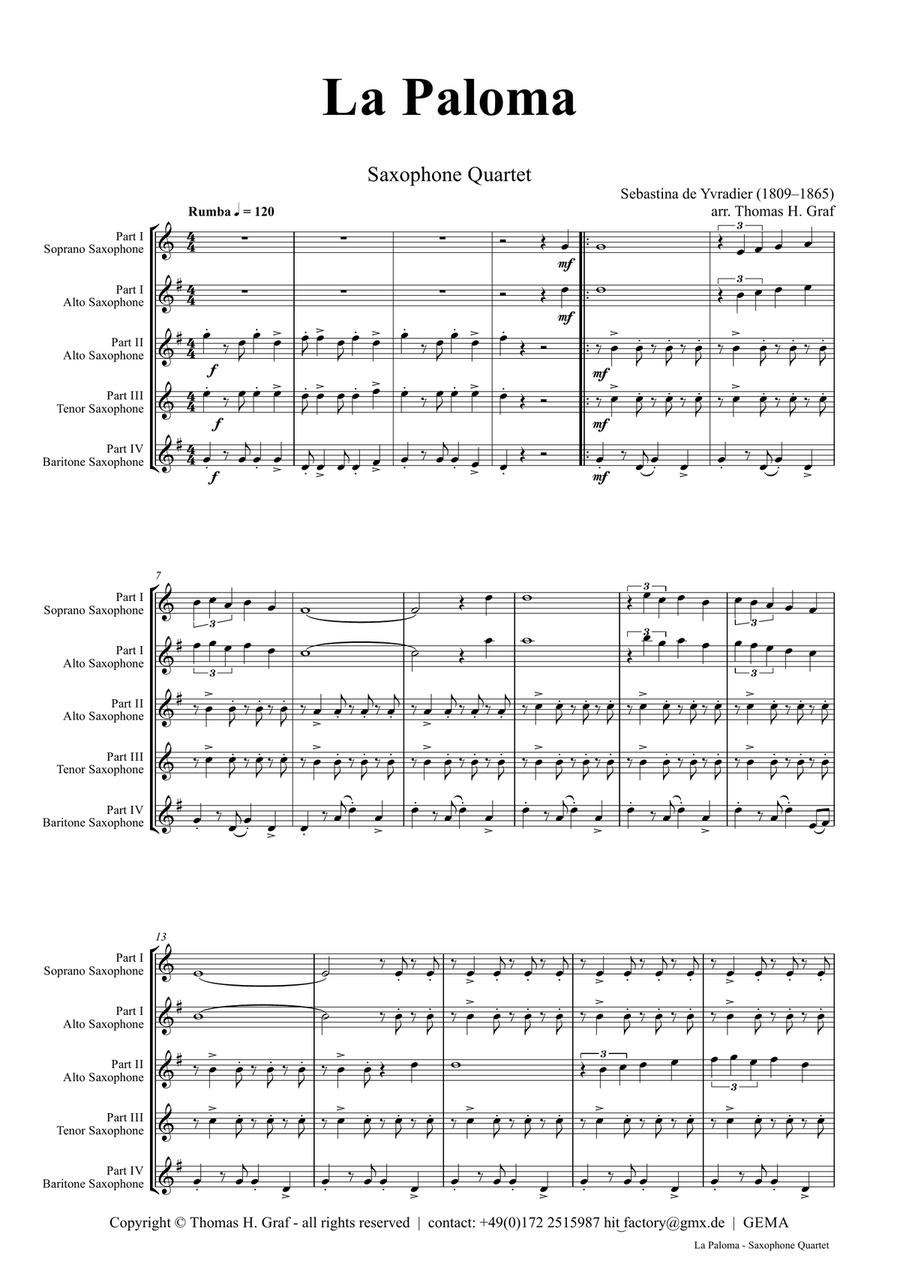Woodwind Ensemble,Woodwind Quartet Alto Saxophone,Baritone Saxophone,Soprano Saxophone,Tenor Saxophone - Level 2 - Digital Download SKU: A0.568938 Arranged by Thomas Graf. Contemporary. 25 pages. Thomas Graf - the-hit-factory.com #3430243. Published by Thomas Graf - the-hit-factory.com (A0.568938). La Paloma is a popular Spanish song that has been produced and reinterpreted in diverse cultures, settings, arrangements, and recordings over the last 140 years. The song was composed and written by the Spanish composer from the Basque region Sebastián Iradier (later Yradier) after he visited Cuba in 1861. Iradier may have composed La Paloma around 1863, just two years before he died in Spain in obscurity, never to learn how popular his song would become. La Paloma belongs to a genre of songs called Habaneras, a musical style developed in 19th-century Spain that is still today very much present in the form of folk songs and formal compositions, particularly in the Northern Basque Region and East Coast (Catalonia and Valencia) regions of the country. Like all Habaneras, its characteristic and distinct rhythm reflects the fusion of the local Cuban songs that the Spanish sailors of the time brought back with them from their travels to the island, with the rhythm structure of the flamenco tanguillo gaditano (original from Cádiz, Andalusia). Very quickly La Paloma became popular outside of Spain, particularly in Mexico, and soon spread around the world. In many places, including Afghanistan, Hawaii, the Philippines, Germany, Romania, Zanzibar, and Goa it gained the status of a quasi-folk song. Over the years the popularity of La Paloma has surged and receded periodically, but never subsided. It may be considered one of the first universal popular hits and has appealed to artists of diverse musical backgrounds.[1] There are more than one thousand versions of this song, and that together with Yesterday by the Beatles, is one of the most recorded songs in the history of music. Instrumentation: Soprano (Alto), Alto, Tenor, Baritone  Listen to the recording - a challenge for your ensemble. Please don't forget to review your purchase - you will help other musicians to choose the perfect arrangement for their ensemble. Thank you very much! Check out our latest uploads: http://www.sheetmusicplus.com/publishers/thomas-graf-the-hit-factory-com/smp-press/3001412+1303131?N... Any individual arrangement and substitute parts are available on request. Call +49 (0) 172 2515987 E-Mail: info@the-hit-factory.com. www.the-hit-factory.com facebook: https://www.facebook.com/hitfactorymusic Video: https://www.youtu.be/qR5PI78fGqM .
